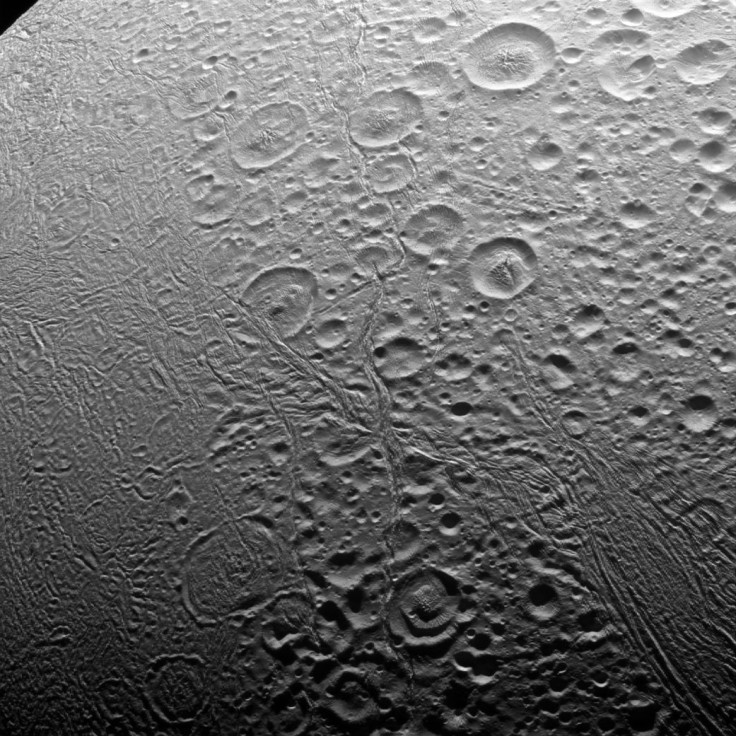NASA Releases Saturn Video From Cassini’s First Dive Over Saturn

With Cassini’s Grand Finale mission underway, we finally know what Saturn looks like up close. NASA released a half-minute video Wednesday, made from a sequence of images the spacecraft captured during the first of its 22 dives over Saturn.
The video shows a one-hour observation of Saturn, starting with a vortex at the gas giant’s north pole, and then moving southward and heading past the outer boundary of the hexagon-shaped jet stream. The hexagon, which is wider than two Earths side-by-side, wraps the north polar region of the planet.
Read: Cassini Photographs Saturn's Ravioli-Shaped Moon
Toward the end of the video, the camera can be seen rotating, which was actually Cassini reorienting itself in the direction in which it is moving.
“I was surprised to see so many sharp edges along the hexagon’s outer boundary and the eye-wall of the polar vortex. Something must be keeping different latitudes from mixing to maintain those edges,” Kunio Sayanagi, an associate of the Cassini imaging team based at Hampton University in Virginia, who helped produce the new movie, said in a statement Thursday.
For capturing the details seen in the video, the spacecraft came closer than before to the top of the clouds that engulf Saturn. From an altitude of about 45,000 miles (72,400 kilometers) above the clouds, Cassini dropped to a height of merely 4,200 miles to record these images. The improved the resolution of the camera: the smallest resolvable features in Saturn’s atmosphere went from 5.4 miles per pixel to a mere 0.5 mile per pixel. And Cassini scientists are gearing up for the next dive, which could yield even better images.
“The images from the first pass were great, but we were conservative with the camera settings. We plan to make updates to our observations for a similar opportunity on June 28 that we think will result in even better views,” Andrew Ingersoll, a member of the Cassini imaging team based at Caltech in Pasadena, California, said in the statement.
NASA also released an image Wednesday of the north pole of Enceladus, an icy moon that is one of Saturn’s 63 known natural satellites. The image shows a heavily cratered surface, which indicates the material on top has not been renewed in a very long time. That is in sharp contrast to the south polar region, which exhibits intense geological activity.

This image was also captured Nov. 27, 2016 by Cassini from a distance of about 20,000 miles. Taken in visible light by the spacecraft’s narrow-angle camera, the photograph shows north of the moon in top-left. The area visible is about 313 miles across.
Cassini, a collaboration between NASA, the European Space Agency and the Italian Space Agency, captured the images April 26. The spacecraft took off from Earth Oct. 15, 1997, and reached Titan, Saturn’s largest moon, in January 2005.
It has been studying the Saturn system since. After the Grand Finale mission is over, the spacecraft will dive into Saturn’s atmosphere and burn up, to avoid possible contamination of the planet’s moons, which could be potentially habitable.
© Copyright IBTimes 2024. All rights reserved.





















